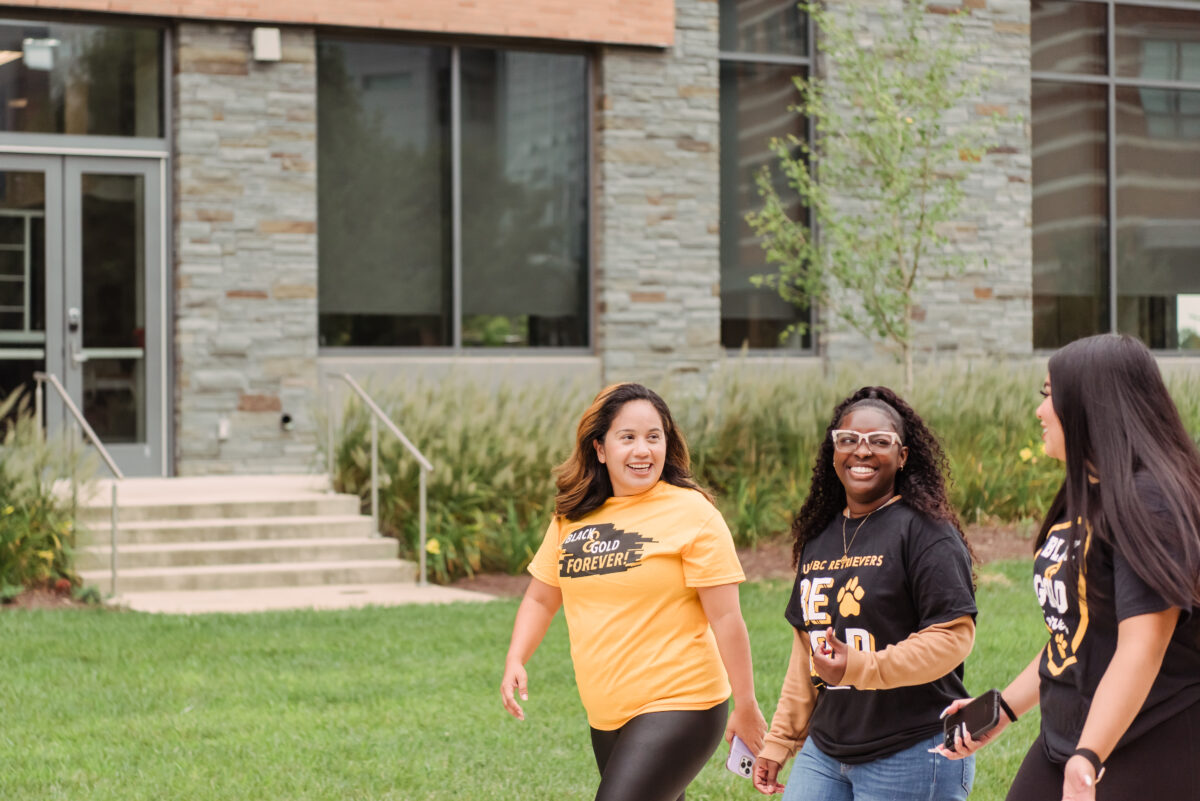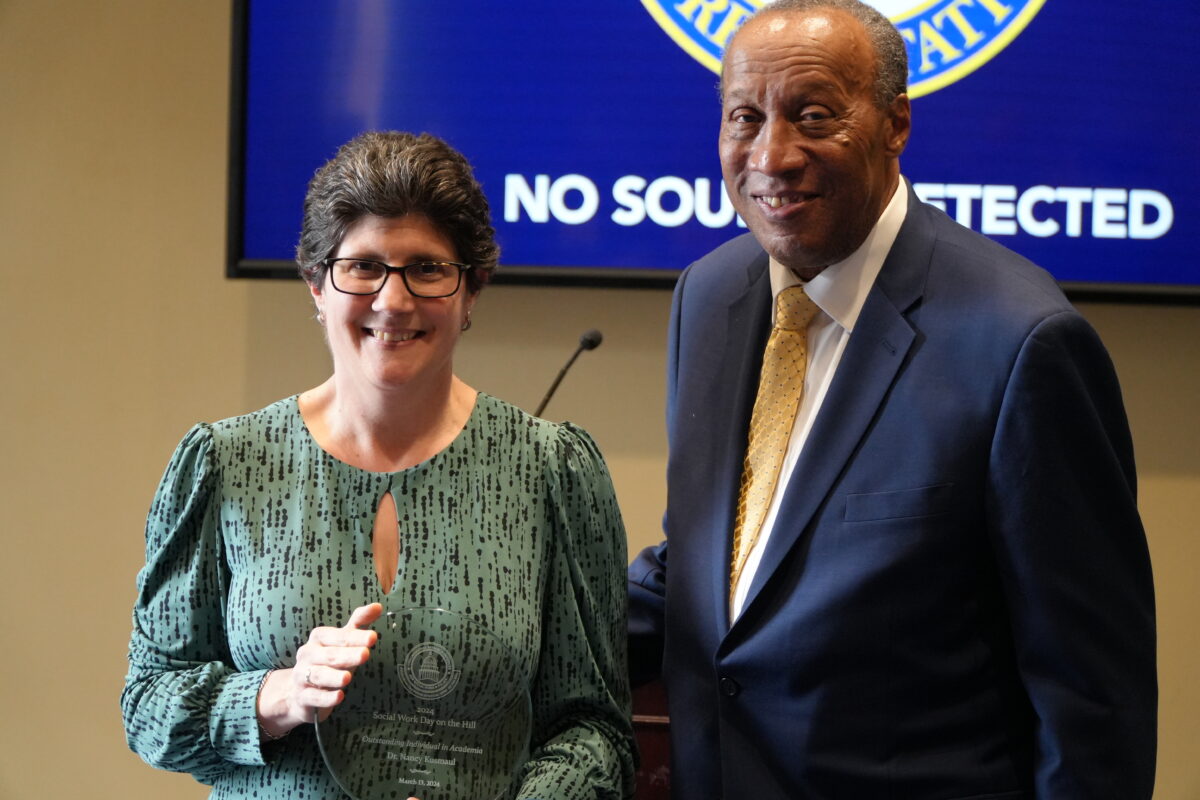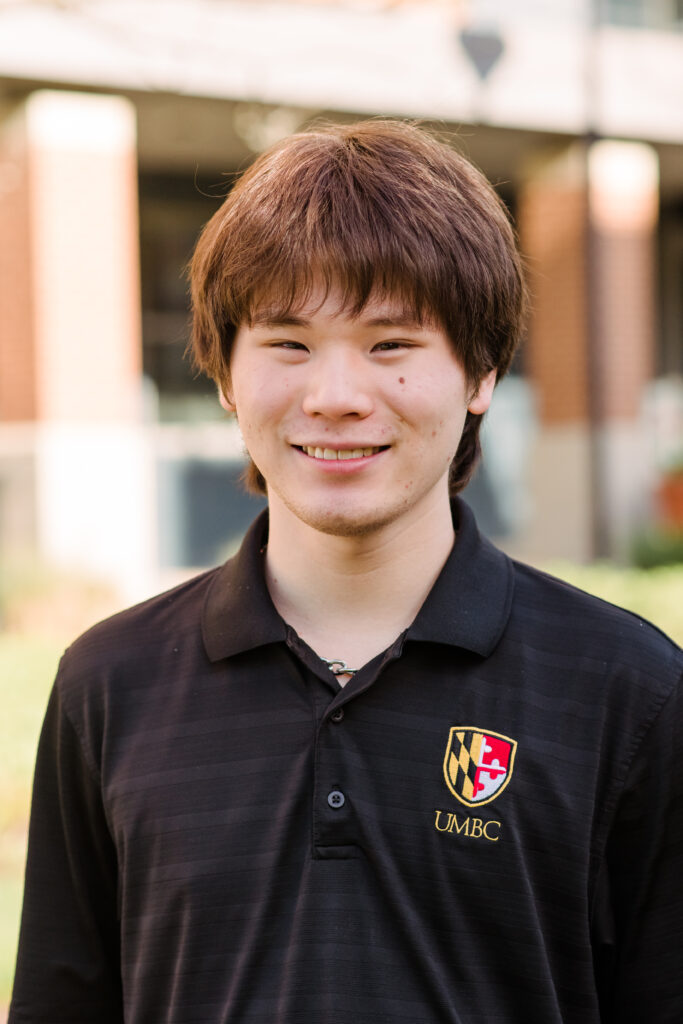Illuminating the Channels of Communication
UMBC’s newest research center, the Center for Advanced Studies in Photonics Research (CASPR), is a hotbed for innovative photonics research. Robinson Kuis, an applied physics Ph.D. candidate, conducts laser technology research in CASPR, which is funded by the NASA Goddard Space Flight Center. In fact, UMBC is ranked 16th nationwide for NASA funding.
Kuis is studying under the mentorship of Anthony Johnson, director of CASPR, and a professor of physics and computer science/electrical engineering at UMBC. Johnson is a leading expert in the area of photonics. Prior to UMBC, he was chairperson and distinguished professor of the physics department at the New Jersey Institute of Technology (NJIT). He also worked in AT&T Bell Laboratory’s photonic circuits research department as a distinguished member of their technical staff for 14 years, and was the 2002 president of the 16,000-member Optical Society of America.
Under Johnson’s mentorship, Kuis—who first worked with the photonics expert as an undergraduate at NJIT—is working to shed new light on optical communications, quite literally. In Johnson’s lab, he is in the process of building a laser for the purpose of studying “nonlinear optics” as it relates to telecommunications.
Far below the ocean surface, currents of information are constantly flowing at the speed of light. “If you send an e-mail or make a phone call to Europe today, it’s most likely to be optically controlled,” explains Kuis. Lasers are at the heart of this high-speed telecommunications technology. Through fiber optics, lasers relay information in the form of optical pulses or signals that are sent through optical fiber cables.
Kuis’ entry into the world of photonics research began at NJIT with a challenge from Johnson. As a sophomore, Kuis approached Johnson after a stimulating lecture he gave on photonics. “I went to him and said, ‘Can I do research with you?’ He took me into the lab, put a laser in front of me and said, ‘Alright, make it lase. Here’s the manual.’ ” Kuis took up the challenge, and within two hours he had succeeded.
That was enough to impress Johnson, who has provided Kuis with immense support ever since. He encouraged him to apply to the Bell Labs/Lucent Technologies Cooperative Research Fellowship Program (CRFP) program, of which he himself is a product, and recommended him to his contact at Lucent Technologies where he worked.
Of Kuis, Johnson says, “He’s an invaluable member of my research team.”
For more details about these and other research projects at UMBC, watch the home page for the debut of a new online home for UMBC research. If you know of UMBC research projects with a positive impact on people’s daily lives, please e-mail information to researchnews@umbc.edu.
(11/8/04)



